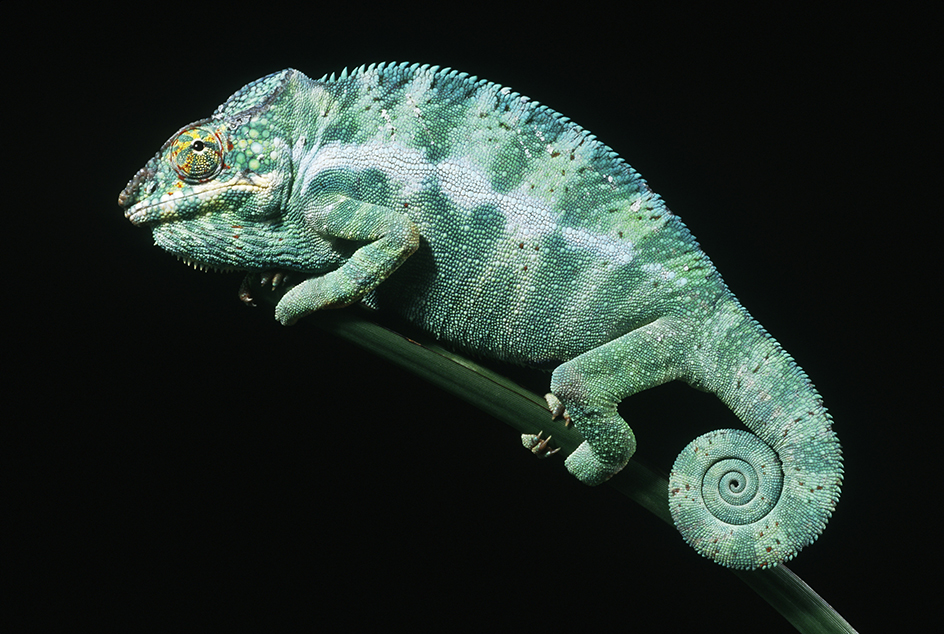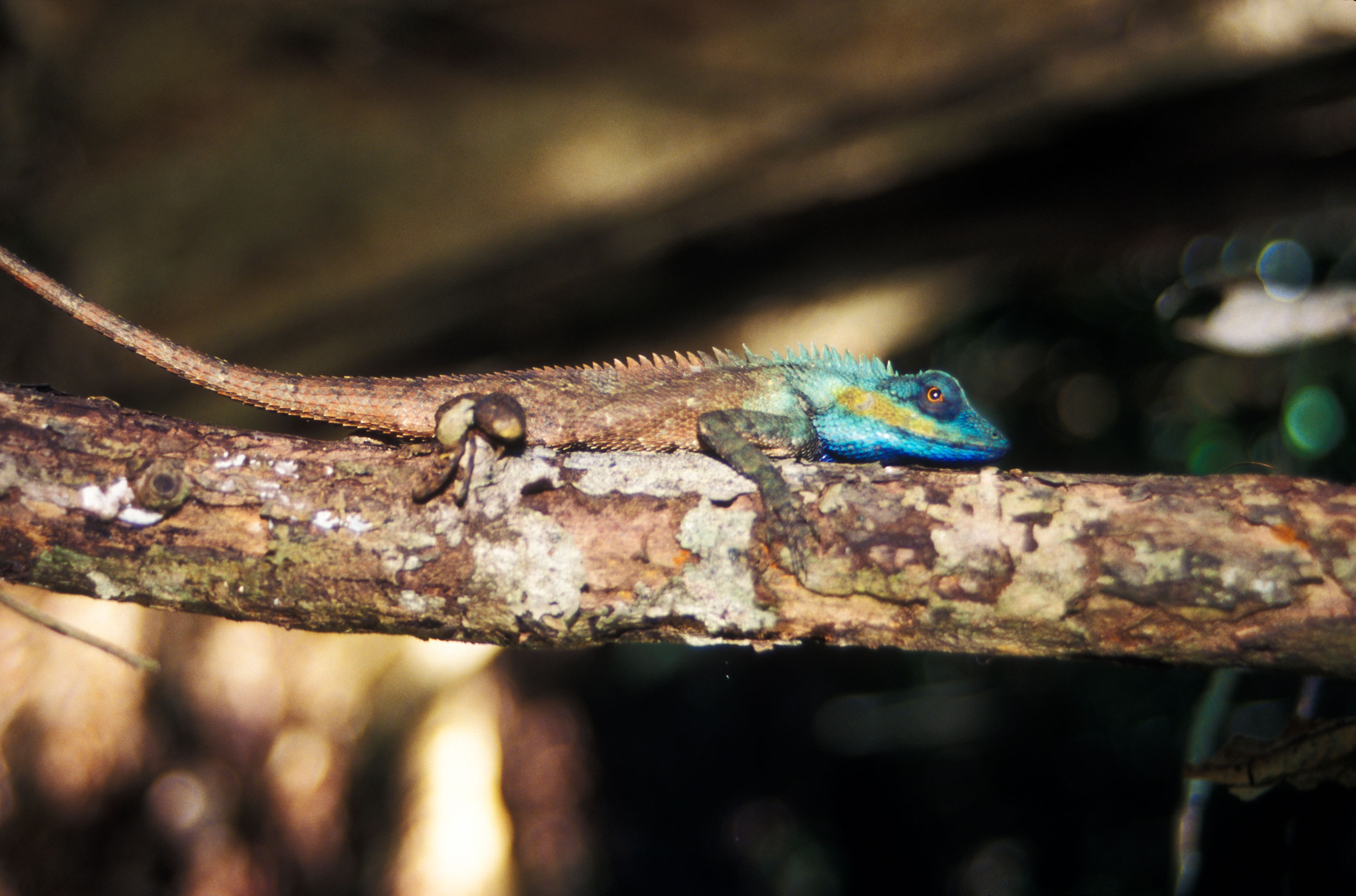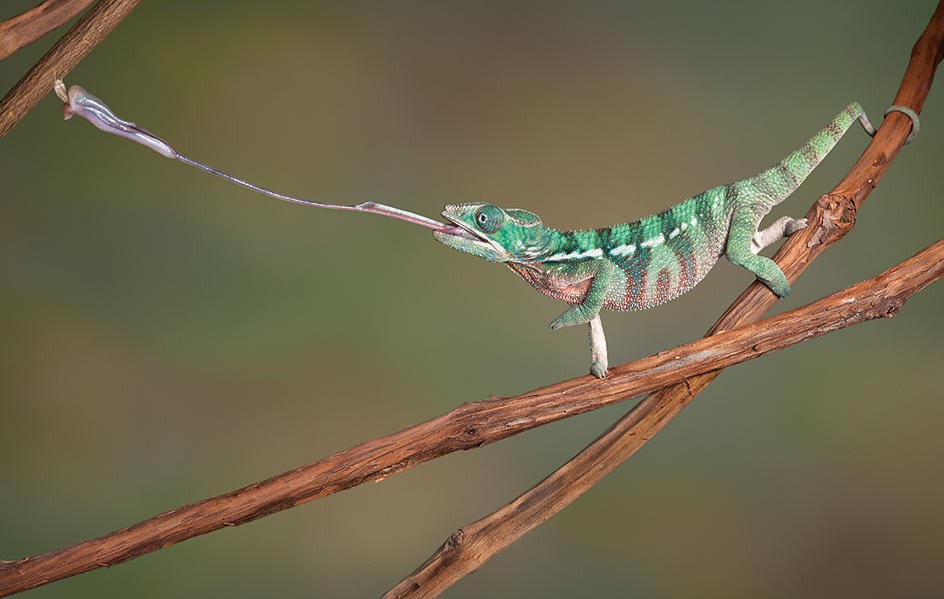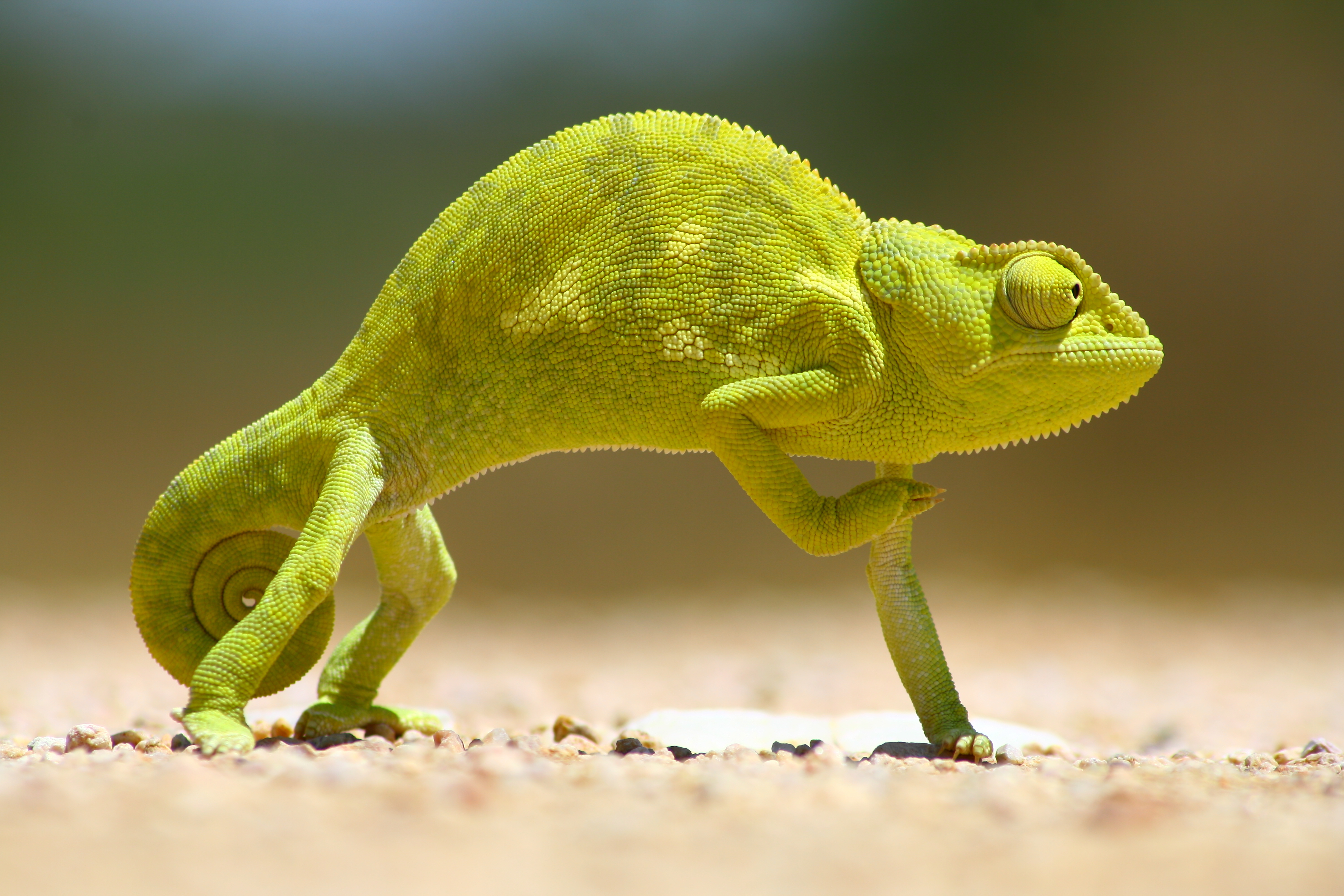Chameleon, << kuh MEE lee uhn, >> is any of a large group of lizards. Most chameleons live in the forests of mainland Africa and the African island country of Madagascar. A few kinds live in the Middle East, in southern Asia, and in southern Spain.

Chameleons are known for their ability to change color, but a number of other kinds of lizards also have this ability. A chameleon may be green, yellow, or tan one minute, and the next minute it may be brown or black. Chameleons also may become spotted or blotched. These lizards change color in response to variations in light or temperature, as the result of fright, or to communicate with other chameleons. Some of a chameleon’s color patterns also serve as camouflage, helping them to blend in with their surroundings. The chameleon’s color is controlled by body chemicals called hormones. These chemicals affect pigments in the skin.

A lizard known as the anole << uh NOH lee >> is closely related to chameleons. The hundreds of anole species (kinds) live in South America, Central America, and the southeastern United States. People commonly refer to anoles as American chameleons. See Anole.
The body of a chameleon
is flattened from side to side. Chameleons range from 11/4 to 25 inches (3.2 to 63 centimeters) long. As many as three horns may grow from a chameleon’s head. The eyes stick out and function independently, so that the animal can look forward and backward at the same time. A chameleon’s feet grasp like hands rather than cling with sharp claws, as do those of most other lizards. The chameleon is one of the few lizards that has a prehensile (grasping) tail. Loading the player...
Chameleon walking on a tree branch
The life of a chameleon.
Chameleons move extremely slowly. Most types live in trees and bushes, while some reside on the ground under fallen leaves or other plant materials. Chameleons have a long, sticky tongue with which they capture insects and other small prey. The tongue, which may measure as long as the entire body, is controlled by powerful muscles in the throat. It shoots out so rapidly that the human eye can hardly see it.

Chameleons do not actively fight one another. The males establish feeding territories, which they defend by trying to outbluff their rivals. To scare away other males, they may puff out their throat and the rest of their body to look larger, or they may change colors.

In most species of chameleons, the males rarely come to the ground. But the females of many species dig nests in the ground for the 30 to 40 eggs that they lay every year. Females of other species keep the eggs in their bodies until they are ready to hatch.
